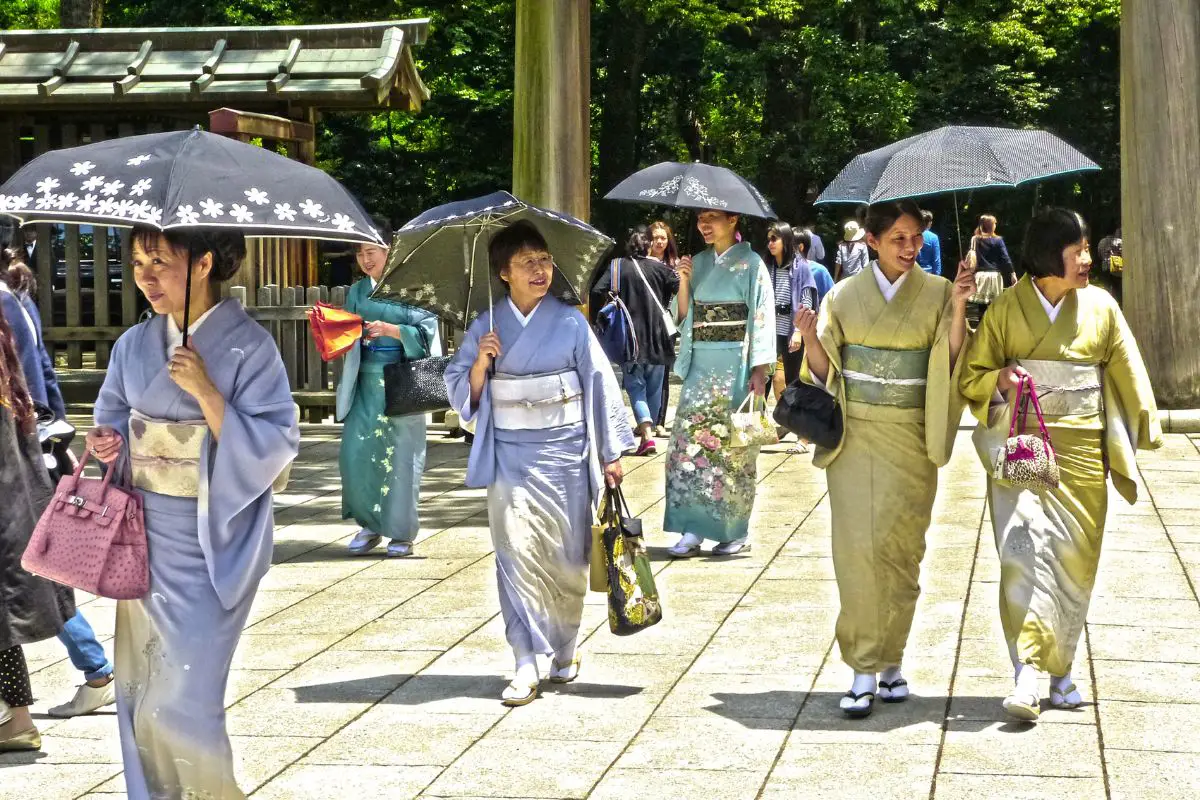The Japanese school system is slightly different from most Western countries’ schooling systems, operating on what is known as a “three term system”, with the school year beginning in April, and ending in March.

The first semester begins in April and ends roughly around the end of July, but this can vary depending upon regional differences. The second semester begins at the start of September and finishes the week before Christmas.
The final semester of the year begins in January and then ends mid-way through March. Each semester begins and ends with a formal ceremony, and students have both midterm and end-of-semester exams.
Whilst Japanese schools (see also ‘Do All Japanese Schools Have Uniforms?‘) might sound gruelling, most schools carry out extra-curricular activities, with field trips, cultural festivals, and sporting events all being commonplace throughout the academic year.
Does Japan Have A Summer Break?
Despite contrary beliefs, Japanese schools do have a summer break! It usually occurs in the period between the end of the first semester and the start of the second semester.
However, Japanese summer breaks are very different from your typical summer vacation, as Japanese school children are often expected to do school work or even attend school throughout their breaks!
It is not too extensive though, with children often given workbooks, in which they are expected to complete a little bit of each day throughout the duration of the break, alternatively if the children are part of a school club, they will often go to the school during the break to participate in club activities.
This may seem unfair to the school children, however, there is a reason why Japan’s schooling system is admired so much and is so highly revered, and ensuring that the kids are doing a small amount of work each day means that they stay engaged on the school subjects year-round.
How Long Is Summer Break In Japan?
Summer break is typically around 40 days, or 6 weeks, long for most schools in Japan, although those in regions such as Hokkaido, where the winters are much colder and harsher, have shortened summer breaks and long winter breaks to compensate.
School hours actually tend to shorten as a break approaches, generally, Japanese schools have 6 periods in a day as standard, with usual school hours being 8:30 am to 3:00 pm, allowing for enough time for these periods to be covered, as well as a short break for lunch.
But as the break approaches, the periods lessen, with the day being reduced to 4 periods, lunch, and cleaning time, with this school day ending at around 1 pm.
Then the day is reduced to 3 periods and cleaning time, with no lunch break offered, and on the final day, only 1 or 2 periods are held.
When school starts again after the summer break, this is done in reverse order, allowing the children to readjust to school life after their time away.
Whilst this might seem like it would be difficult for parents, school children in Japan go to and from school by themselves, and are generally very independent, so whilst some after-school care might be necessary, it doesn’t cause too much of an inconvenience.
Why Is Summer Break So Short In Japan?
Compared to most western countries, especially the U.S, where school children often get 2 months of summer vacation, Japan’s short summer break can be puzzling, however, there is actually a good reason for its short duration!

Japan’s summer is incredibly hot between July and August, so children are often taken to places such as swimming pools, or places with air-conditioning, such as libraries.
However, many working parents in Japan do not get lengthy vacations, with many people only getting 5 days of holiday during the summer, so it can be incredibly difficult to entertain children during the summer break.
Things To Do In Japan For Kids In Summer Break
Despite their summer workload, there is plenty to keep children busy during their summer breaks!
Despite it being considerably shorter than most summer breaks in the western world, it is the longest break that children in Japan get, so it is mainly a time for them to get the chance to do things they wouldn’t normally get to do in other parts of the year.
Usually, this is the time of year that parents will take their children on holiday, whilst there are often school-organised activities arranged too.
Because many parents are unable to take the time off in order to go on vacation with their children, many parents send their children to what is known as Juku, which is a type of cram school, in order to both keep their children busy as well as to help them with their education.
However, this is mainly done by parents who live in cities
Summer is also very different if children have entrance exams!
Children in the sixth grade who want to attend a national middle school or a private middle school, as well as those in the ninth grade who want to attend high school, will often have an incredibly busy summer as they prepare for their exams in February.
Summary
As you can see, the Japanese schooling system is incredibly different from what you may be used to in the rest of the world, as its semester separations are very different and its breaks are a lot shorter!
But, there is still plenty for the school children to be doing whilst on their breaks, especially during the summer break!
Hopefully, this guide has given you everything you need to know about Japan’s summer breaks and the way in which the Japanese schooling system works, and whilst it may seem like their time off isn’t much of a break at all, there is a reason why Japanese children have such a great work ethic!
- Transport in Japan: Exploring Buses, Public Transportation, Railways, Bicycles, and Major Cities - April 3, 2024
- Exploring Japan: Prefecture and Regions of Japan - April 3, 2024
- Travel Guide: Visiting Mount Koya (Koya, Mount Koya, Koyasan) – A Pilgrimage to the Spiritual Heart of Wakayama in Kansai, Japan - April 2, 2024








